Quentin Tarantino’s ninth film Once Upon a Time…in Hollywood was one of the biggest hits of 2019, and for good reason. It is a film packed with great characters, memorable scenes, and Quentin Tarantino trademarks. Join us on our Once Upon a Time…in Hollywood analysis as we explore the Quentin Tarantino directing style and how he imbues his scenes with such white-knuckle suspense.
Quentin Tarantino Style
Picking the right moment
Once Upon a Time...in Hollywood has many scenes worth analysis, too many to count in fact, but of all these memorable scenes, one stands above the rest as the most suspenseful.
Cliff Booth's long walk through Spahn Ranch.
For our Once Upon a Time...in Hollywood analysis we’re taking a look at how this scene is built with tension and which techniques went into executing it. Like so many of his best movies, he brings his A-game to this love letter to Hollywood.
With Tarantino directing, you can be sure that everything always circles back to the screenplay. Quentin Tarantino’s directing style aims the most for suspense in this sequence because he’s identified this scene as the best opportunity for pure tension in the entire script.
Often, Tarantino leans on his trademark dialogue to build extended suspense sequences. This time, he goes lean on dialogue and heavy on visual storytelling.
To wrap our minds around how this scene was constructed, we broke the entire sequence down in StudioBinder's shot lists software. Learn more about the camera work Tarantino implements during the Spahn Ranch sequence and download the full shot list.
The entire Spahn Ranch sequence as a shot list
Cliff is separated from any allies, he’s surrounded by creepy, dirty strangers. He’s on their turf, and he’s got a long walk ahead of him toward an old friend who may or may not be in danger, or worse.
All of these ingredients from the script present opportunities for the scene to be directed with the highest degree of suspense and are why we chose it as our Once Upon a Time...in Hollywood analysis.
DID YOU KNOW?
Quentin Tarantino spent 5 years writing this story as a novel before transitioning it into a screenplay.
Compare the Spahn Ranch sequence to another large set-piece with danger in the air, such as the climactic home invasion, and you will notice a few key differences.
The Spahn Ranch sequence has a great and humorous release at the end, but maintains a more serious, threatening atmosphere throughout. This is a key reason why Tarantino makes Cliff’s visit to the ranch the most tense section of the film.
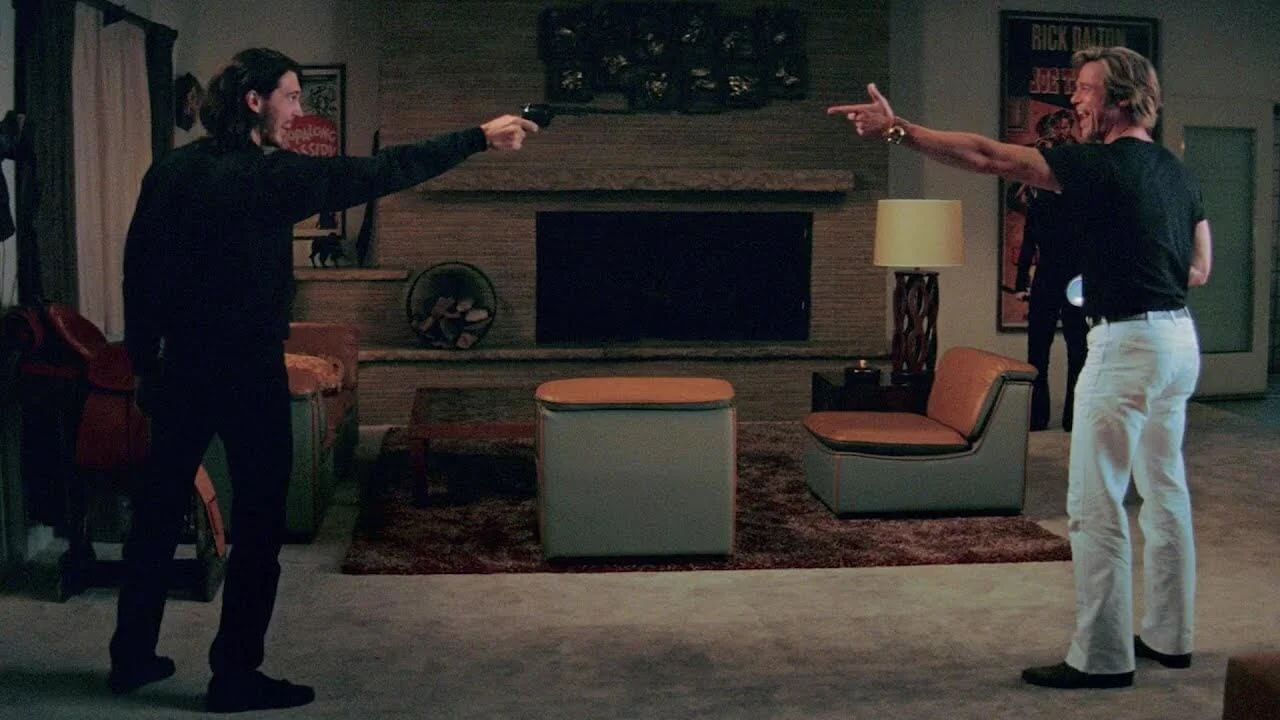
Manson follower home invasion
While the climax of the film certainly has a high level of tension, it also has a high level of humor, levity, and over-the-top violent fun as the Manson followers are eliminated by an LSD addled Cliff, and a drunk-out-of-his-mind Rick.
ONCE UPON A TIME IN HOLLYWOOD ANALYSIS
Staging suspense
Quentin Tarantino’s cinematography style has always been an eclectic blend of filmic inspirations. With this sequence, Tarantino’s techniques are designed to pay homage to masters of suspense like Sergio Leone, and of course, Alfred Hitchcock. Like all of Tarantino's best movies, references to other films and filmmakers are plenty.
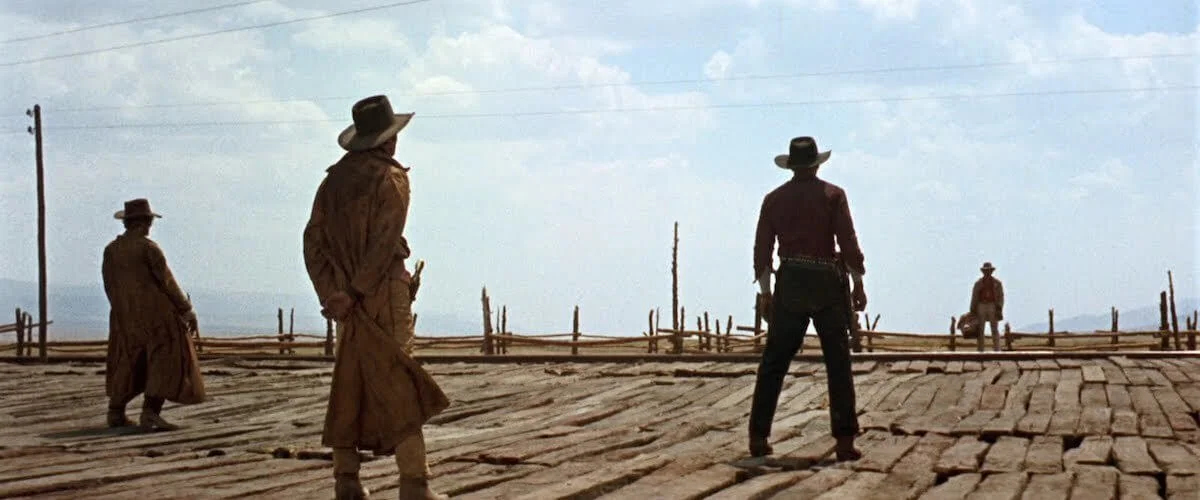
Sergio Leone’s Once Upon a Time in the West
As with most effectively suspenseful scenes, the Spahn Ranch sequence slows down and takes its time. Quentin Tarantino’s cinematography style changes throughout the sequence. Shots linger, edits are farther apart, and there’s a great deal more silence than in most other scenes.
The scene makes frequent use of POV shots that show us the grimy details that jump out at Cliff. They highlight his goal (the house at the far end of the ranch), and serve as indicators of his progress as he gets closer and closer.
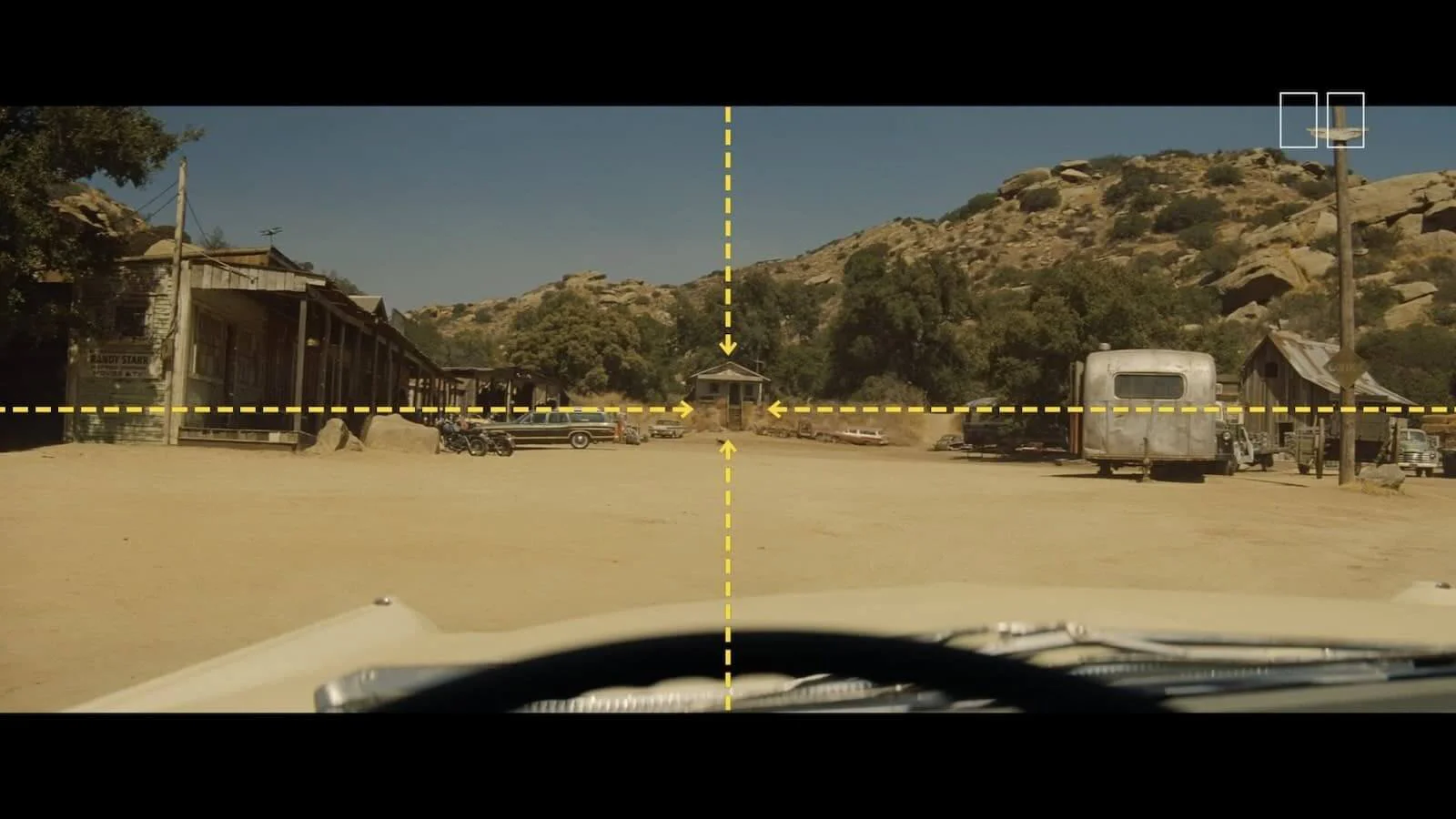
Cliff's POV focuses on his goal
One of Tarantino’s techniques throughout this sequence is finding opportunities to diminish Cliff within the frame. He films Cliff from a distance, or from above, looking down on him; removing a degree of his power in frame.
We've uploaded storyboards detailing the various camera angles and POV shots used for the suspenseful Spahn Ranch sequence on StudioBinder's storyboard software. Check out the storyboards below to better understand how Tarantino's compositions make us feel anxious and tense.
The POV Spahn Ranch sequence as a storyboard
When analyzing Quentin Tarantino’s cinematography, you will find that he is often unafraid to push the envelope, or to break the rules. Consider his work with DP Robert Richardson — who has shot nearly every QT movie since Kill Bill. Here's Richardson in his own words on working with Tarantino, Scorsese and his first major collaborator, Oliver Stone.
Robert Richardson Cinematography Style • Subscribe on YouTube
Now, back to the scene. One such rule break occurs early on in this scene as Cliff is led deeper into enemy territory by Pussycat. Tarantino breaks the 180-degree line twice in quick succession.
DEFINITION
What is the 180-degree line?
The 180-degree rule is a filmmaking guideline for spatial relations between two characters on screen. The 180 rule sets an imaginary axis, or eye line, between two characters or between a character and an object. By keeping the camera on one side of this imaginary axis, the characters maintain the same left/right relationship to each other, keeping the space of the scene orderly and easy to follow.
This uncommon Tarantino technique adds to a viewer’s sense of unease, and clues us into the unsavory nature of those who surround Cliff on this ranch. Techniques like this work more on a subconscious or intuitive level — we may not notice these shifts but, in theory, we sense them nonetheless.
Further adding to the suspense is the blocking of the sequence.
Want to learn more about how Tarantino and his team planned out the blocking and staging of this scene? Check out and download the full storyboard below so that you can recognize how Tarantino can keep you at the edge of your seat.
The Spahn Ranch sequence as a storyboard
Quentin Tarantino Blocking Style
Blocking tension
A great deal of tension can be also mined from blocking. Where you place the actors, props and other elements within the frame is yet another to communicate with the audience.BLOCKING DEFINITION
What does blocking a scene mean?
Performance blocking, or stage blocking, or actor blocking, refers to how one or more actors move around the space during a production. This can be blocking in a stage play or blocking in a scene for movies or television. This can even include a blocking rehearsal that will help to clarify the intention behind each movement and smooth out the motions. Blocking isn’t simply where the actors move through a scene, but also how they interact with their environment. This can include body language.
Blocking as a film term means the same thing as blocking in theater, but stage plays have limited space whereas film blocking might include moving props, vehicles, and multiple locations. It’s important for actors and directors to understand the power of performance blocking.
Cliff’s long walk from his car to the house allows for an elongation of time — time that allows suspense to grow and flourish. As Cliff continues his linear movement, the Manson followers move in different directions all around him, imbued with an unpredictable energy.
When Cliff and the Manson followers find themselves in direct opposition, their blocking puts them opposite each other, with the contested house directly behind both parties.
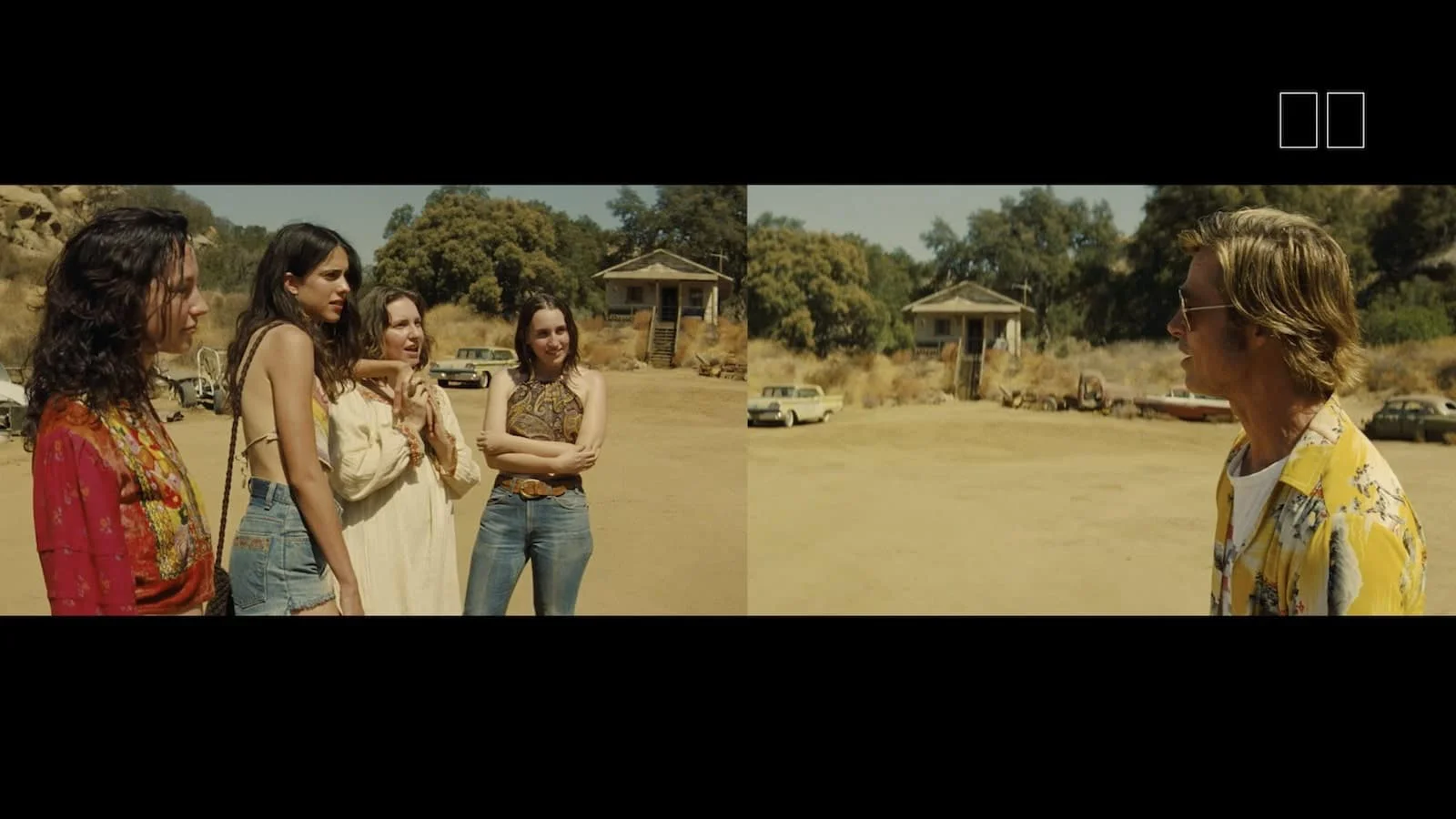
Two sides fighting for the same goal
At first, Cliff has plenty of breathing room around him in frame, while the Manson followers crowd their frame.
Once the conflict heats up even further, the framing shifts, and all that comfortable space around Cliff is gone. It is replaced by a giant bus seeming to block any possible escape and yet even more Manson followers who amble around behind him.
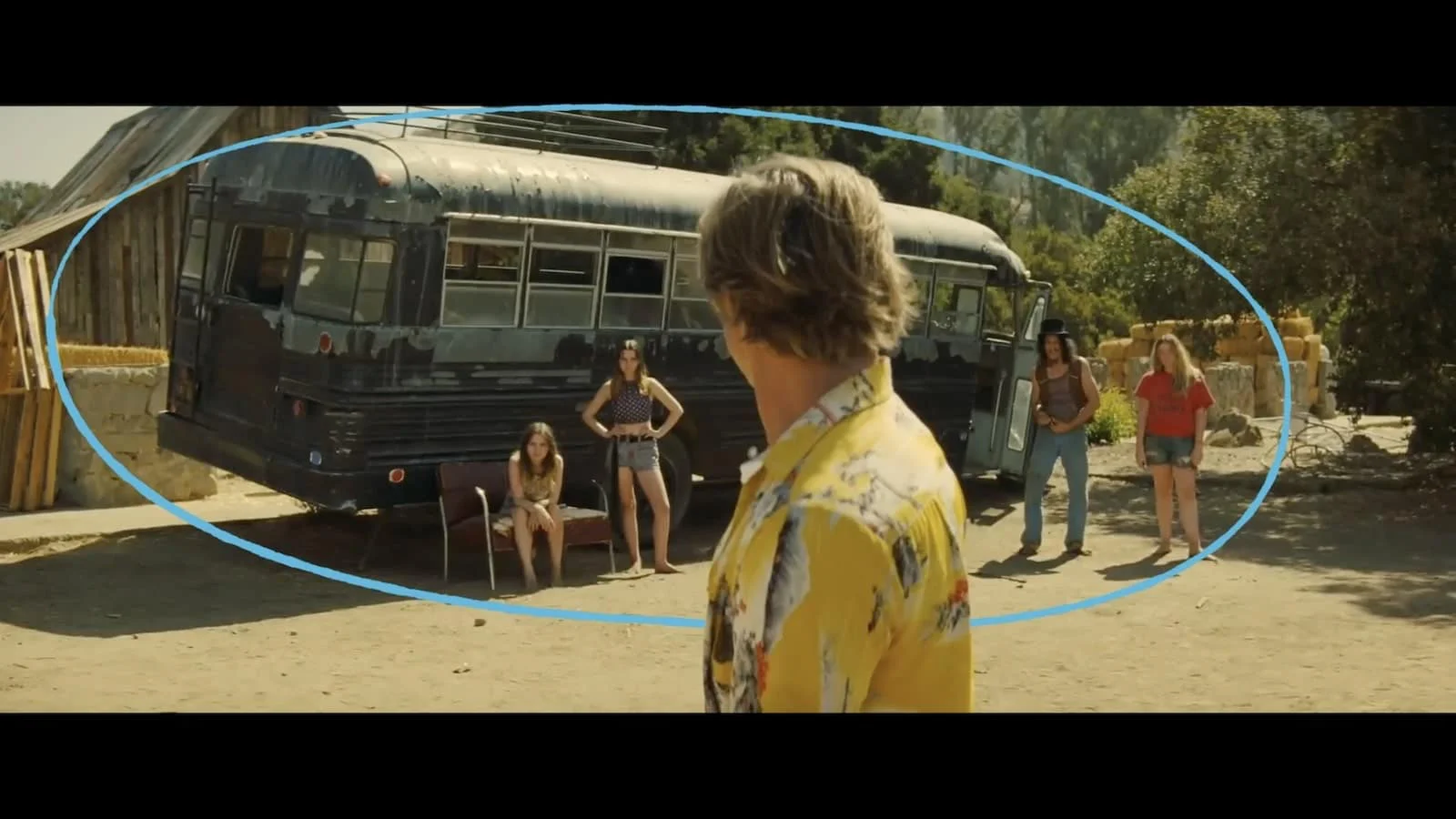
Cliff finds himself surrounded
Cliff being stopped at the door by Squeaky allows the tension to be ratcheted up even further in classic Quentin Tarantino style. As the razor sharp dialogue flies back and forth through the screen-door, Quentin Tarantino’s cinematography gets tighter and adopts extreme Dutch angles.
Dutch Angle Video Essay • Subscribe on YouTube
Once inside the house, the blocking restricts Cliff to tighter confines, limiting his options. The borrowed music from Hitchcock’s Torn Curtain further heightens the suspense as Cliff proceeds down the narrow hall and loses track of Squeaky behind him.
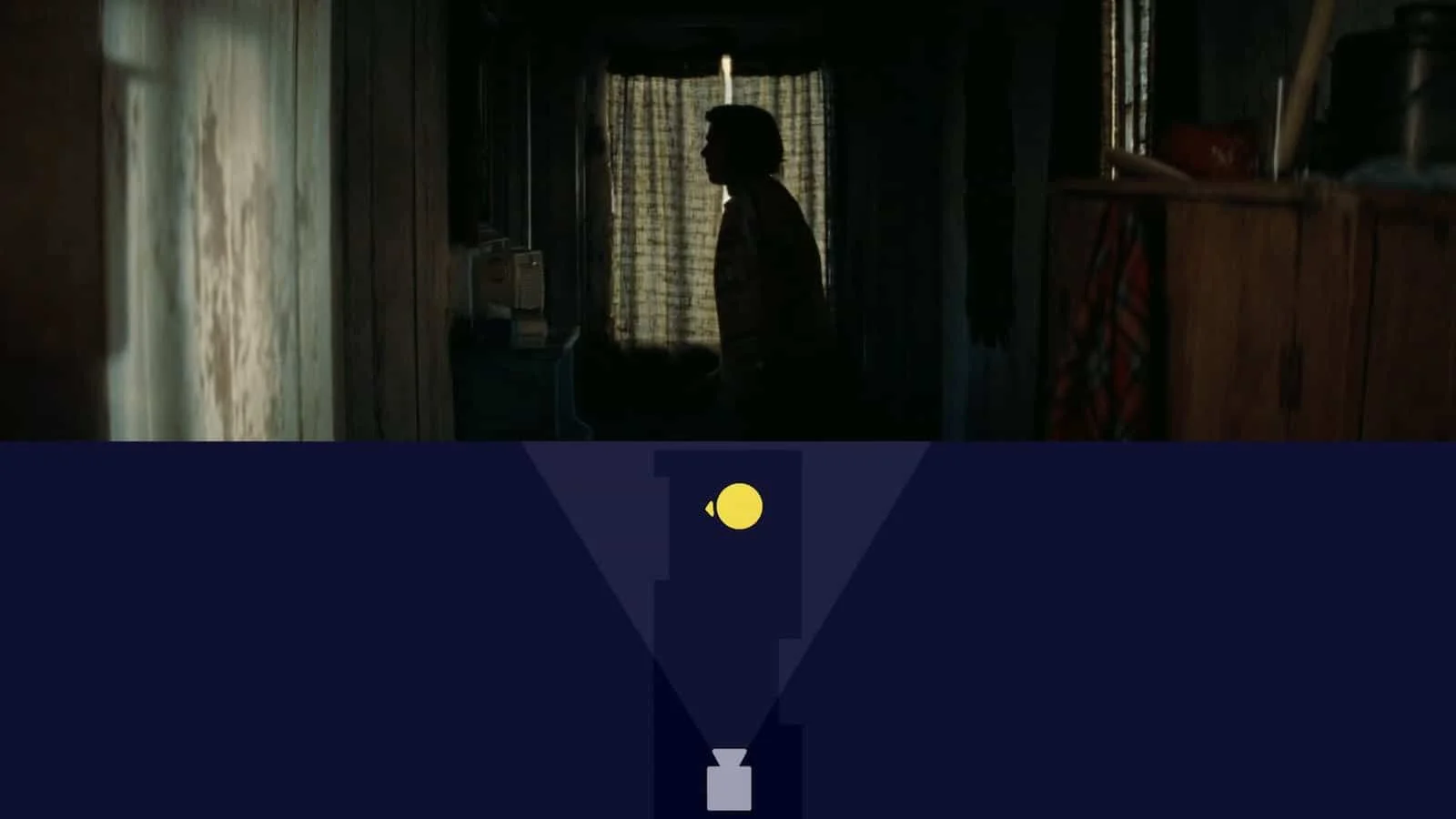
The walls closing in around him
Every great buildup of suspense demands an equally great payoff. In typical Quentin Tarantino style, he pulls through in spades, delivering a wonderful comedic release with the help of a Tarantino trademark: a fun cameo. Doing this ends the scene on a major high note.
Related Posts
QUENTIN TARANTINO CINEMATOGRAPHY
Quentin Tarantino directing style
If you enjoyed our Once Upon a Time...in Hollywood analysis, then be sure to check out more StudioBinder content. For additional insights and analysis of that iconic Quentin Tarantino style, be sure to check out our other coverage of the man, the myth, the legend.
Up Next: Quentin Tarantino Directing Style →
Showcase your vision with elegant shot lists and storyboards.
Create robust and customizable shot lists. Upload images to make storyboards and slideshows.
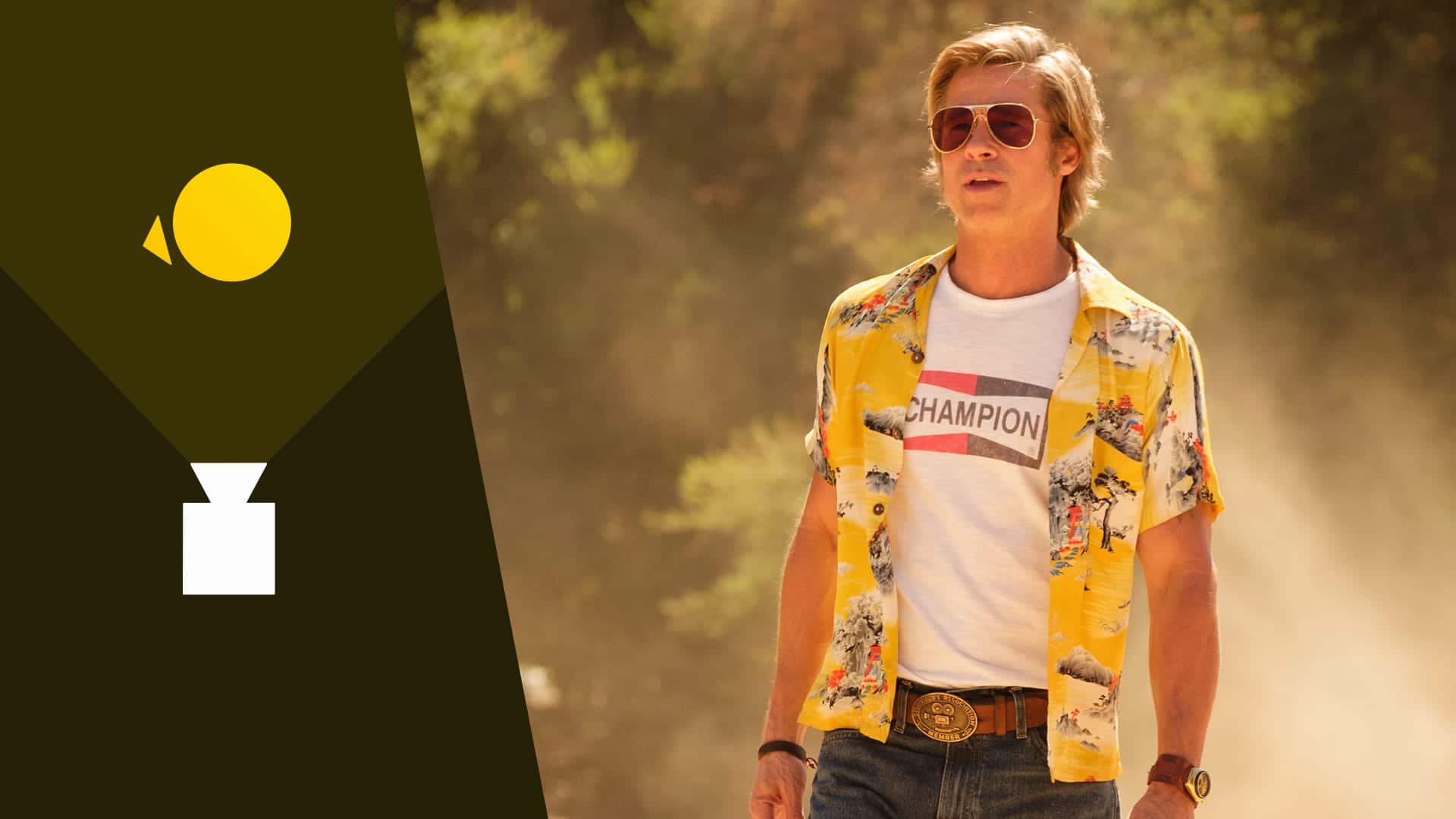
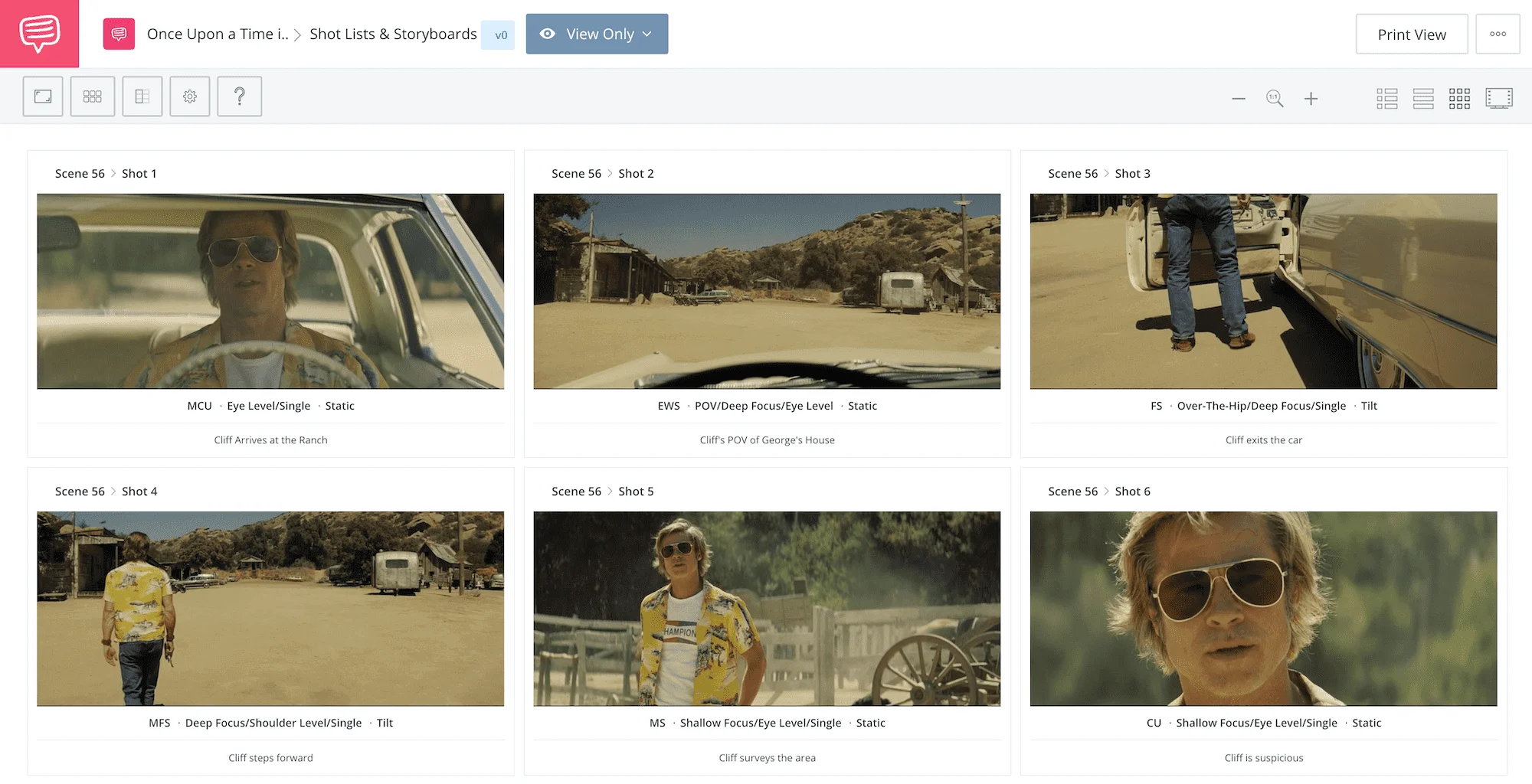
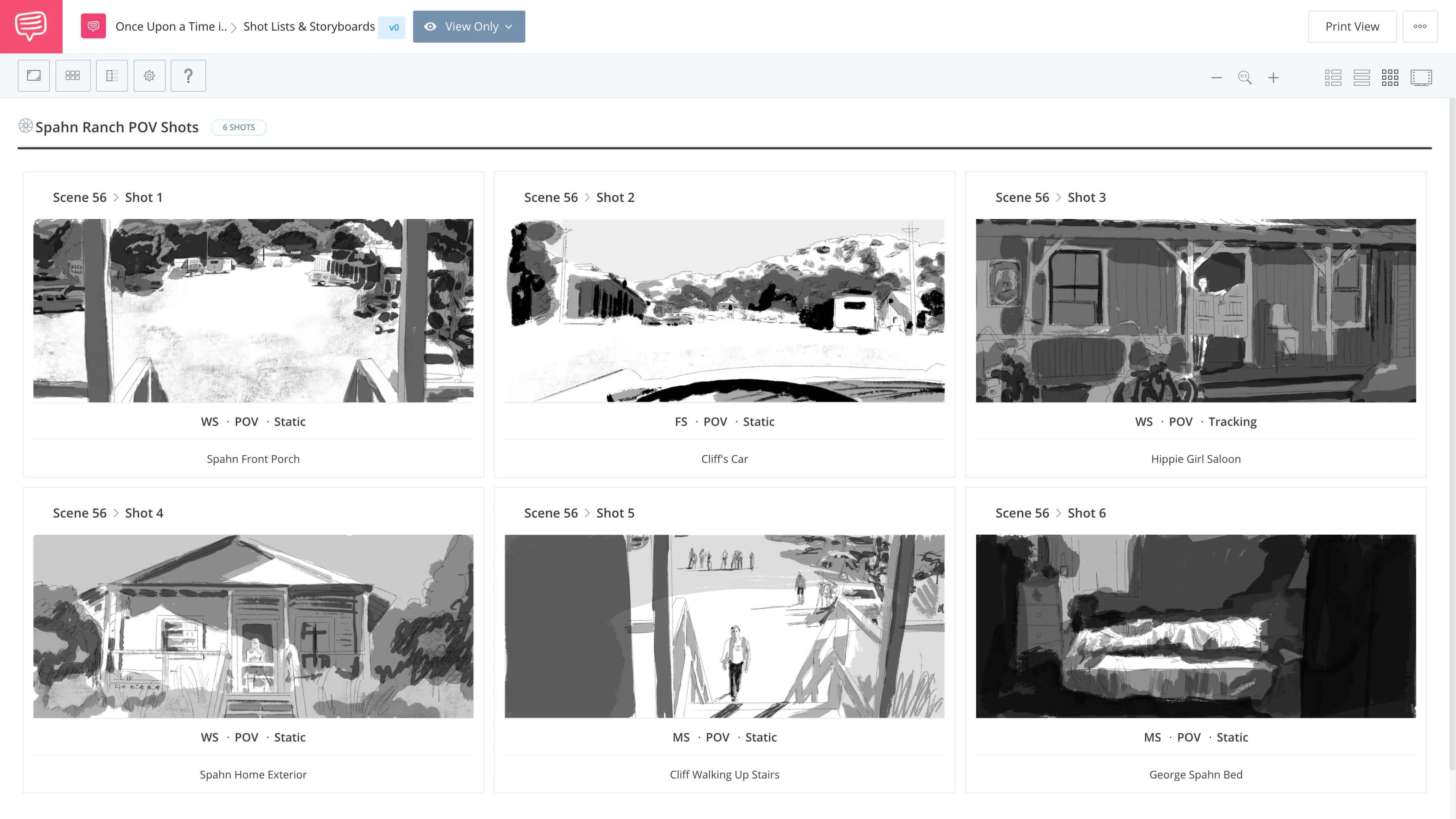
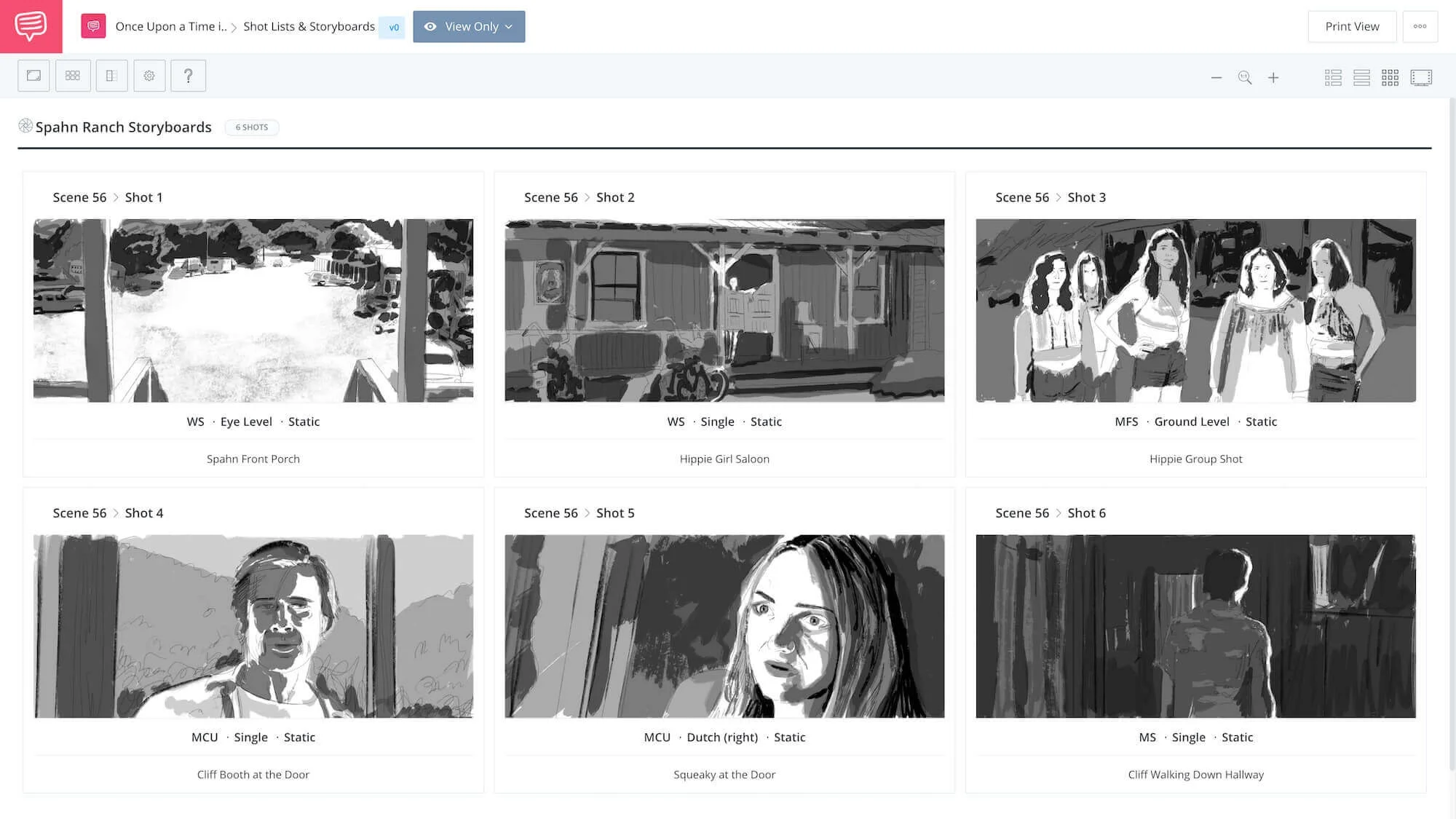
Thanks for the film list. I’ll be watching them once I have some time.